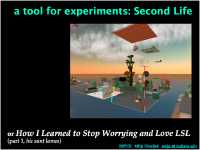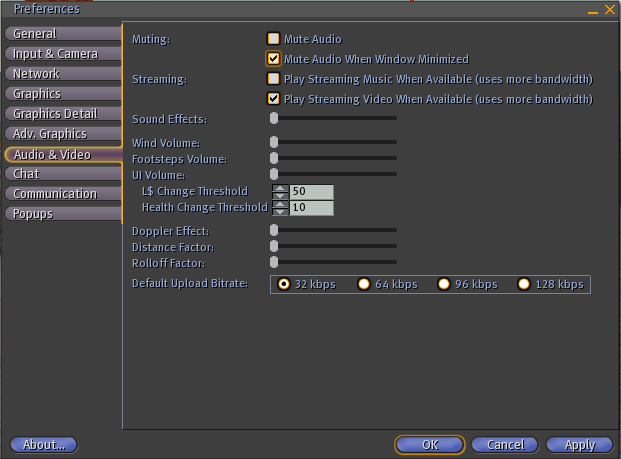 |
Ph.D. Dissertation
"Design and Evaluation of a Virtual Environment Infrastructure to Support Experiments in Social Behavior"
Submitted to the faculty of the University Graduate School
in partial fulfillment of the requirements
for the degree
Doctor of Philosophy
in Computer Science
in the School of Informatics and Computing
Indiana University
Bloomington
(2010)
Abstract:
Virtual worlds provide useful platforms for social behavioral research,
but impose stringent limitations on the rules of engagement,
responsiveness, and data collection, along with other resource
restrictions. The major challenge from a computer science standpoint in
developing group behavior applications for such environments is
accommodating the resource restrictions imposed on the developer by the
virtual world implementation. The application design and development are
strongly influenced by these restrictions, and turn them into a classic
resource-limited computation problem with many novel properties.
The particular unique factors include a scripting language lacking many
common data structures, limited runtime memory resources, built-in
constraints designed to inhibit potentially dangerous user-scripted
activities, limited network and communication protocols, and
deliberately degraded speed and performance. The topology of the
interaction among the controlling scripts is also limited in a unique
fashion by the design of the virtual world available to us.
Our main contribution has been to frame a software environment to support
the needs of the required social behavior experiments while adhering to
these sometimes extreme limitations. The experiments that are supported by
our virtual environment recreate prior studies done in clean, stylized
environments that provided only minimally realistic social interaction.
Our work satisfies the need to make the environment experienced by the
subjects more realistic by adding the complexity of the virtual world and
engaging the participants in more life-like decision-making. The analytic
context that we have provided differs from previous work in online social
networks and virtual worlds, in that we are able to conduct carefully
controlled experiments, where specific parameters and rules of interaction
between participants and the environment can be selected on a run-by-run
basis.
|
|
doing cognitive science in Second Life (2007-2009)
What does it take to port collective behavior studies from 2D-based experiments to 3D MMVWs? Technically, is it doable? Behaviorally, what changes?
• part 7: updated presentation about designing and implementing controlled behavior studies in Second Life,
including Foraging and CPR experiments (presentation slides, 11MB pdf) and analyzing avatars' movements.
• part 5 and part 6 in-world tests, after moving the IU CogSci space on the new Limestone Quarry island (thanks, AVL!)
There's something fascinating about dozens of avatars chasing illuminated tiles:
• part 3 and part 4 presented entirely in-world, i.e. within SL on the IU CogSci space on Campus island
• part 2: more LSL examples (slides 2MB pdf, this part has been presented simultaneously in-world as well, with audio stream, group demo and interactive examples with remote audience).
Instructions on how to listen to the audio stream within the Second Life client:
• log in to Second Life and teleport (i.e. the slurl is: http://slurl.com/secondlife/Campus/226/168/25/) to the IU CogSci space on Campus island
• a dialog may appear in SL, asking: Play streaming video when available? Click on <Play media> to be able to listen
• in your SL Preferences for Audio&Video, make sure audio is not muted, and streaming video is enabled. All other settings can be set to minimum if you prefer not to hear SL ambient sounds:

• click on the play icon in the Movies tab which appears at the bottom of the SL interface, it'll turn from  to to  when playing. when playing.
• there may be a few seconds lag in the audio: this is normal since it is a live broadcast through a streaming server (not a two-way audio chat)
|
• part 1, introduction: How I Learned to Stop Worrying and Love LSL (presentation slides, 7.5MB pdf)
|
|
Syllabus, planning and proposal for a 3xx-level course in synthetic worlds / virtual environments. Sample Topics and summary:
• Hands-on approach to learning about interactive 3D graphic worlds, their design, implementation and deployment.
• Practical coursework at dynamic scene-graph level.
• Analysis of existing works of high production quality.
• Scripting/authoring/programming techniques for 3D environments.
Using Second Life as multi-user networked VR engine and for multimedia hosting, for labs, practical assignments and final project.
|
|
|

